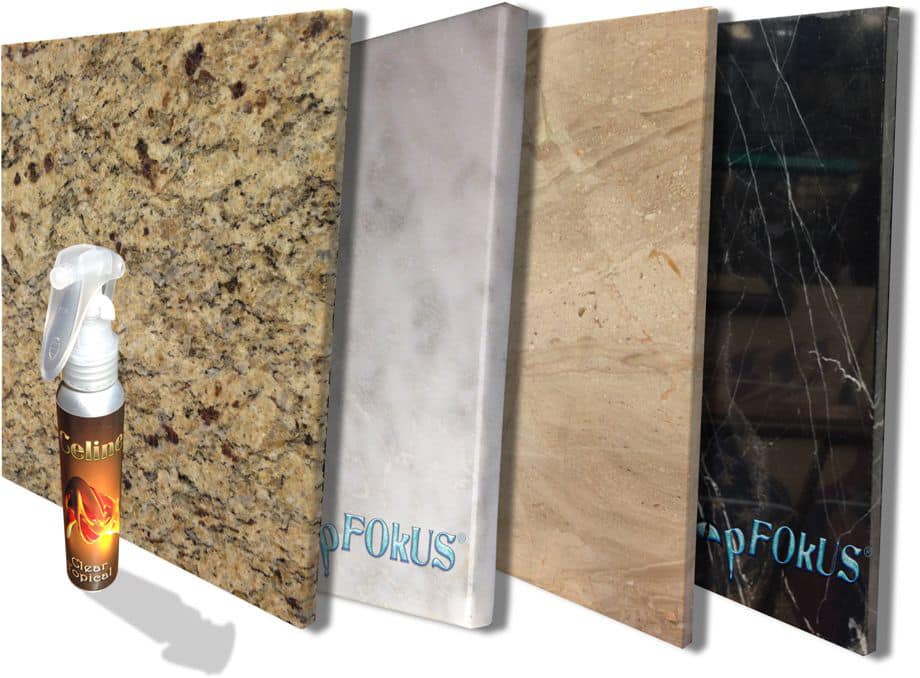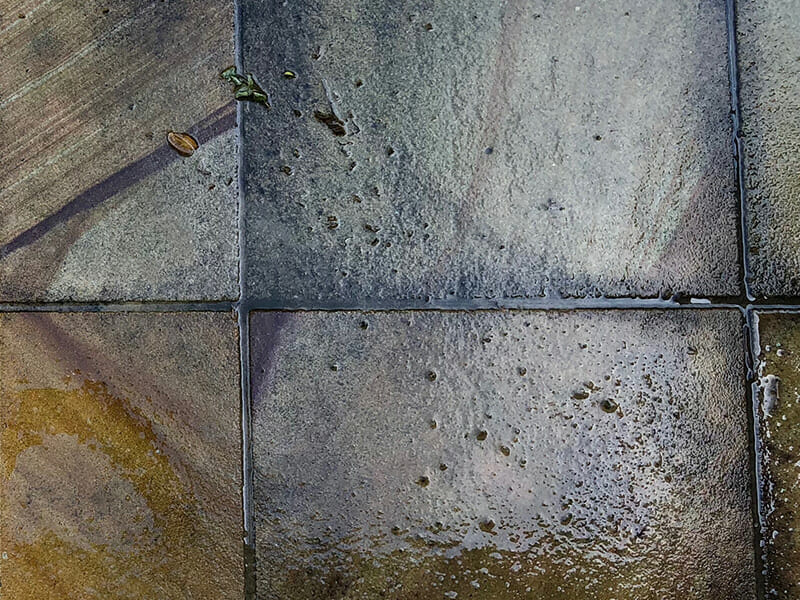Have you ever wondered if mold can harm natural stone surfaces? Mold is a common problem in many households, and its presence can cause a lot of concern. But when it comes to natural stone surfaces, can mold really damage their integrity? In this article, we will explore the potential effects of mold on natural stone surfaces and provide you with valuable insights to help you better understand and address this issue. So, let’s dive in and discover the truth about mold and its impact on natural stone surfaces.
Introduction to mold and natural stone surfaces
What is mold?
Mold is a type of fungus that thrives in environments with high moisture and humidity levels. It can appear as black, green, or even orange spots on various surfaces, including natural stone.
What are natural stone surfaces?
Natural stone surfaces refer to materials like marble, granite, limestone, and travertine that are mined from the earth and used for countertops, flooring, and other architectural features. These surfaces provide a timeless and elegant aesthetic to homes and buildings.
Why are natural stone surfaces susceptible to mold growth?
Natural stone surfaces are porous, meaning they have tiny pores and fissures that can absorb moisture. When moisture seeps into these surfaces, it creates an ideal environment for mold to grow. The porosity of natural stone makes it more susceptible to mold growth compared to non-porous materials.
Understanding the impact of mold on natural stone surfaces
How does mold affect the appearance of natural stone surfaces?
Mold can significantly impact the appearance of natural stone surfaces. It appears as unsightly spots or patches, which can mar the beauty of the stone. Mold growth can also cause discoloration, making the stone lose its natural vibrancy.
Can mold cause structural damage to natural stone surfaces?
While mold itself does not directly cause structural damage to natural stone surfaces, its presence can lead to degradation and deterioration. Mold can accelerate the weathering process and cause the stone to become weak and brittle over time, compromising its structural integrity.
The role of mold in accelerating weathering and deterioration of natural stone surfaces
Mold can promote the growth of other microorganisms, such as algae and lichen, on natural stone surfaces. These organisms can further deteriorate the stone by breaking down its surface and causing more damage. Mold can also contribute to the development of cracks and fissures, leading to structural issues.

Factors contributing to mold growth on natural stone surfaces
Moisture as the primary catalyst for mold growth
Moisture is the primary catalyst for mold growth on natural stone surfaces. Whether it’s from spills, leaks, high humidity, or condensation, any moisture that seeps into the stone can provide an ideal breeding ground for mold.
Humidity levels and their influence on mold development
High humidity levels can create a favorable environment for mold growth on natural stone surfaces. Areas with poor ventilation or those exposed to excessive moisture, such as bathrooms or kitchens, are particularly susceptible to mold infestation.
The role of poor ventilation in promoting mold on natural stone surfaces
Poor ventilation can trap moisture in enclosed spaces, promoting mold growth on natural stone surfaces. Without proper air circulation, the moisture on the stone surface will not evaporate efficiently, creating an environment conducive to mold development.
Types of mold commonly found on natural stone surfaces
Common types of mold
Some common types of mold found on natural stone surfaces include Aspergillus, Cladosporium, Penicillium, and Stachybotrys. These molds have different characteristics and appearances that vary in color, texture, and growth patterns.
Characteristics and appearances of different mold species
Aspergillus appears as yellow-green or olive-green colonies on natural stone surfaces. Cladosporium is often seen as black or olive-green spots. Penicillium can manifest as bluish-green or white growth, while Stachybotrys, also known as black mold, appears as dark patches with a slimy texture.
How different mold strains can affect specific types of natural stone surfaces
Different mold strains have varying effects on specific types of natural stone surfaces. For example, black mold (Stachybotrys) can cause more severe damage to porous stones like limestone and travertine, compared to non-porous stones like marble and granite.

Prevention and maintenance practices to combat mold growth
Regular cleaning and dusting of natural stone surfaces
Regular cleaning and dusting of natural stone surfaces are crucial to prevent mold growth. Removing dust, dirt, and debris helps eliminate potential food sources for mold. It is recommended to use a soft cloth or mop, along with mild soap or stone-specific cleaners, to clean the surfaces.
Controlling moisture and humidity levels in the environment
Controlling moisture and humidity levels is essential in preventing mold growth on natural stone surfaces. Promptly addressing any water leaks or spills, using dehumidifiers in humid areas, and ensuring proper ventilation can help maintain optimal moisture levels.
Proper ventilation and air circulation in areas with natural stone surfaces
Proper ventilation and air circulation play a vital role in preventing mold growth on natural stone surfaces. Opening windows, using exhaust fans, and utilizing air purifiers can help keep the air flowing and reduce moisture accumulation.
Sealing natural stone surfaces as a preventive measure against mold
Sealing natural stone surfaces with a high-quality, penetrating sealer can act as a preventive measure against mold growth. Sealing helps create a barrier on the surface, reducing its porosity and minimizing the chances of moisture penetration.
Effective cleaning methods for mold removal from natural stone surfaces
Identifying the appropriate cleaning agents for different types of natural stone
When removing mold from natural stone surfaces, it is crucial to identify the appropriate cleaning agents based on the type of stone. Acidic cleaners should be avoided for calcite-based stones like marble and travertine, as they can cause etching. Mild cleaners specifically formulated for natural stone are recommended.
Safe and efficient techniques for mold removal
Using a soft brush or sponge, gently scrub the affected area with the chosen cleaning solution. Ensure that the cleaning solution reaches all the crevices and pores of the stone. Rinse the surface thoroughly with clean water and dry it completely to prevent any moisture from lingering.
Importance of professional cleaning and restoration services
For severe mold infestations or delicate natural stone surfaces, it is advisable to seek professional cleaning and restoration services. Professionals have the expertise, specialized equipment, and knowledge to safely and effectively remove mold while preserving the integrity of the stone.

Repairing mold-damaged natural stone surfaces
Assessing the extent of mold damage
Before initiating repairs, it is crucial to assess the extent of mold damage on natural stone surfaces. Professional stone restoration experts can evaluate the severity of the mold infestation, identify any accompanying structural issues, and devise a suitable repair plan.
Expert techniques for repairing different types of natural stone surfaces
The repair techniques for different types of natural stone surfaces vary depending on the extent of mold damage. These techniques can include deep cleaning, resealing, filling cracks and fissures, and, in severe cases, complete restoration or replacement of the affected stone.
Preventing future mold growth through repairs and restoration
Repairing mold-damaged natural stone surfaces should not only focus on addressing current issues but also aim to prevent future mold growth. Ensuring proper sealing, repairing any structural vulnerabilities, improving ventilation, and implementing preventive maintenance measures can help safeguard against future mold infestations.
Health risks associated with mold on natural stone surfaces
Allergic reactions and respiratory problems caused by mold exposure
Exposure to mold on natural stone surfaces can cause allergic reactions and respiratory problems. Individuals sensitive to mold may experience symptoms such as sneezing, coughing, itchy eyes, and asthma attacks when exposed to mold spores.
Identifying symptoms of mold-related health issues
Symptoms of mold-related health issues may vary from person to person. Common indications include nasal congestion, throat irritation, skin rashes, headaches, and fatigue. It is essential to consult a healthcare professional if these symptoms persist or worsen.
Preventing mold-related health risks
Preventing mold-related health risks can be achieved by maintaining clean and dry natural stone surfaces, improving indoor air quality, and promptly addressing any mold infestations. Following proper cleaning and preventive measures will significantly reduce the chances of mold-related health issues.

Importance of professional assistance in dealing with mold on natural stone surfaces
Benefits of hiring professionals for mold inspection and removal
Hiring professionals for mold inspection and removal offers several benefits. They have the necessary expertise to identify hidden mold, employ proper cleaning and removal techniques, and ensure thorough remediation. Professionals also have access to specialized equipment and products for effective mold eradication.
Expert advice on preventive measures and maintenance
Apart from mold inspection and removal, professionals can provide valuable advice on preventive measures and maintenance practices to minimize future mold growth. They can recommend sealing schedules, cleaning techniques, and proper ventilation strategies, tailored to the specific natural stone surfaces in question.
Ensuring long-term integrity and longevity of natural stone surfaces
By seeking professional assistance, you can ensure the long-term integrity and longevity of your natural stone surfaces. Professionals have the knowledge and skill to repair any existing mold damage, prevent further deterioration, and provide guidance on maintaining the beauty and functionality of your natural stone for years to come.
Conclusion
Mold can indeed damage the integrity of natural stone surfaces. Its growth can negatively impact the appearance, structural integrity, and longevity of these surfaces. Understanding the factors contributing to mold growth, implementing preventive measures, and seeking professional assistance when needed are crucial for maintaining the beauty and structural soundness of natural stone surfaces. By taking proactive steps to prevent and address mold infestations, you can enjoy the timeless beauty of natural stone while ensuring its long-lasting performance.
